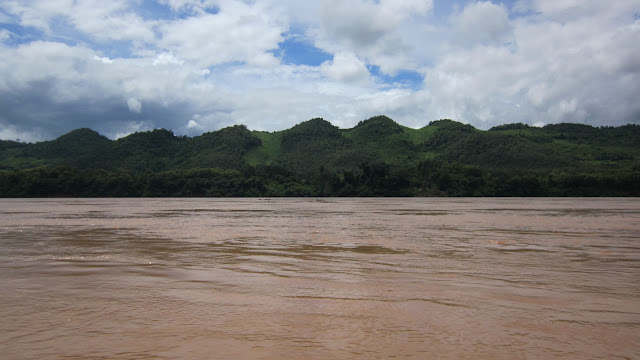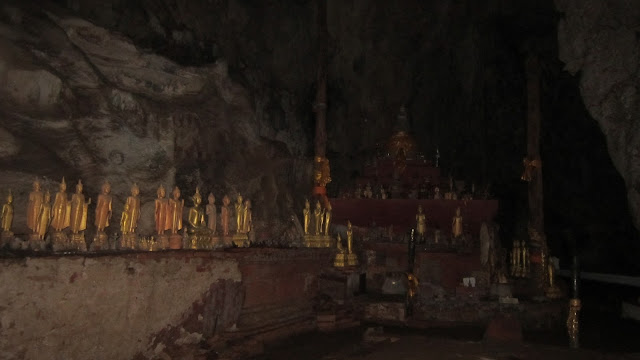Vat Sisaket
In the capital of Laos, Vientiane, there is the Vat Sisaket temple. Built in the in the early 1800s; it contains over 6800 Buddha statues and figures. According to the local traditions this is where the Lao lords and nobles came to swear allegiance to the king. Pictures inside the temple were prohibited, but below are some of the 6800 Buddha statues that surround the temple.
Pak Ou Caves
We took a cruise on the Mekong river to go visit the Pak Ou Caves. Below are a few of snapshots of the scenery.
We took a cruise on the Mekong river to go visit the Pak Ou Caves. Below are a few of snapshots of the scenery.
The Pak Ou Caves are revered throughout Laos and a very popular place for pilgrims. In the caves there are some 4000 statues and statuettes of Buddha.
At this point we are deeper in one of the caves and we have torchlight to help us see what is around us.
During our stay in Laos we visited a silk farm where they “raise” silkworms and make different products out of the silk.
The silkworm cocoons are boiled and small filaments are taken from the cocoons to form a thread. You can see the thread accumulating in the basket next to the Laos lady. On a sad note, the silkworms are still in the cocoon at that stage; not what I had in mind at all! I had conflicting feelings about buying something from the farm. My reasoning being that if I buy a scarf, I am directly preventing many little worms to transform into winged critters. Also, on top of having contributed to their death, I am wearing what used to be their blanky!!! But if I buy something, I am contributing to the local economy and livelihood of many people.
The treads are dyed at the farm with only natural ingredients coming from plants, fruits and the soil. This is a pot of dye currently boiling
Weaving at the farm is done manually and can take up to a couple of months for a scarf depending on how intricate the pattern is.













































